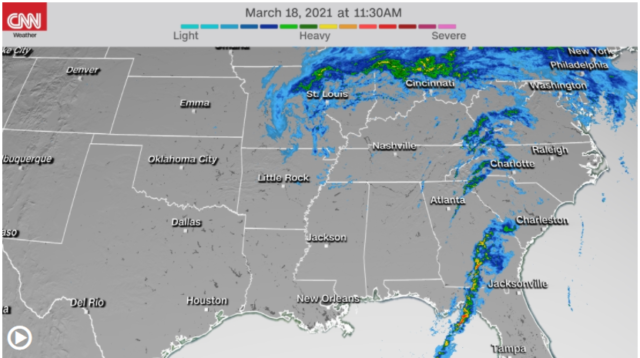Gov. Kay Ivey announced this morning that the storm had moved out of Alabama. In a series of tweets, she wrote:
“After an exhausting day & night of intense weather, the storm system has finally moved out of AL. Like forecasts projected, we had a lot of spinning systems, but thankfully, a # of funnel clouds & swirling supercells w/ vortices didn’t extend to the ground. #alwx #alpolitics
“Overall, we have a lot to be grateful for as it could have been much worse. I’m praying for all those that have been severely impacted & stand ready to assist in the recovery efforts. #alwx #alpolitics 2/3
“Thank you to the meteorologists, emergency managers & first responders for your preparation & timely response. We also appreciate our utility workers for quickly working to restore power in affected areas. #alwx #alpolitics”
After an exhausting day & night of intense weather, the storm system has finally moved out of AL. Like forecasts projected, we had a lot of spinning systems, but thankfully, a # of funnel clouds & swirling supercells w/ vortices didn’t extend to the ground. #alwx #alpolitics 1/3
— Governor Kay Ivey (@GovernorKayIvey) March 18, 2021
According to the New York Times, about 38,000 people had lost power across Mississippi, Louisiana and Alabama on Wednesday night, as storms and tornadoes ripped through the area.
These are pictures from Matthew Foshee taken at the intersection of County Roads 37 and 24 in Chilton County before dark @abc3340 @spann @TaylorSarallo #alwx pic.twitter.com/SMlI5hKamC
— Ashley Gooden (@AshleyGoodenTV) March 18, 2021
The tornado watch that had been in place for parts of Oklahoma, Missouri and Arkansas expired on Wednesday night, however.
The CNN Storm Tracker indicates that the storm has moved south. Both Birmingham and Greensboro, where the NCAA Division I Women’s Championships are being held, look to be in the clear.

